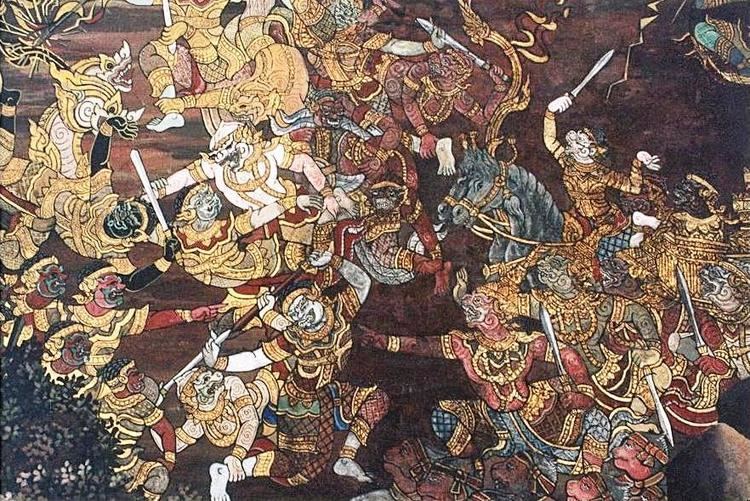 | ||
Suryavansha (Suryavam(n)sham or Solar Dynasty) is a mythological dynasty of ancient India. The term Suryavanshi refers to a person belonging to Suryvansha dynasty.
Rulers
The following is a list, in chronological order, of some of the prominent monarchs of the dynasty;
- Manu or Vaivasvata Manu: the king of all mankind and the first human being on Earth. (According to Hindu belief there are 14 Manvantaras; in each, Manu rules.) Vaivasvata Manu was the seventh Manu. Manu is referred to as a Rajan (King) in the Shatapatha Brahmana scripture. He had nine sons, Vena, Dhrishnu, Narishyan, Nabhaga, Ikshvaku, Karusha, Saryati, Prishadhru, Nabhagarishta and one daughter, Ila, who was married to Budha of the Lunar Dynasty. He left the kingdom to the eldest male of the next generation, Ikshvaku, who was actually the son of Manu's brother Shraaddev.
- Ikshvaku: the first prominent monarch of this dynasty, giving the dynasty its another name the Ikshvaku dynasty.
- Harishchandra: another very prominent monarch of this dynasty, known for his truthfulness, principles and sacrifices.
- Bhagiratha: Sagara's great-grandson, after strenuous penances, at last succeeded in bringing Ganges down from Heaven. When she flowed over the remains of his ancestors, their souls were redeemed, and the ocean was refilled. Ganges bears the name "Bhagirathi", in honour of his deed.
- Dilipa: Dilipa was a powerful king and a religious man. He got a brave and powerful son, Raghu for his good deeds. He loved his wife Sudakshidna.
- Raghu: Raghu was a brave warrior and powerful king. He defeated Indra. During his reign the kingdom prospered very much.
- Aja: Aja was the son of Raghu. He was brave and powerful like his father. He killed an elephant by himself when he was a teenager. During his reign no king revolted.
- Dasratha: Born as Nemi, he acquired the name Dasratha, because his chariot could go in all 8 directions, and also go up and come down on his wish.
- Rama: He is considered the seventh Avatar of the god Vishnu. Many Hindus include his name in either their first or last name. Rama's story before he became king of Ayodhya is recounted in the Ramayana. After he ascended the throne, he performed the Ashwamedha Yajna, or horse sacrifice. Bharata, his younger brother, won the country of Gandhara and settled there.
- Lava and Kusha: They were the twin sons of Rama and his wife Sita. Lava ruled south Kosala while Kusha ruled north Kosala, including Ayodhya. Kusha married "Nagkanya" "Kumuddhati", sister of Kumuda.
- Śuddhodana, leader of the Shakya Ganarajya at Kapilavastu. His son was Siddhartha Shakya, founder of Buddhism and came to be known as Gautam Buddha.
- Prasenjit II (Pasenadi)
- Sumitra: He was the last king of Ayodhya from solar dynasty. In the fourth century BC, emperor Mahapadma Nanda of the Nanda Dynasty forced Sumitra to leave Ayodhya and ended the dynasty's rule.
References
Suryavansha Wikipedia(Text) CC BY-SA
